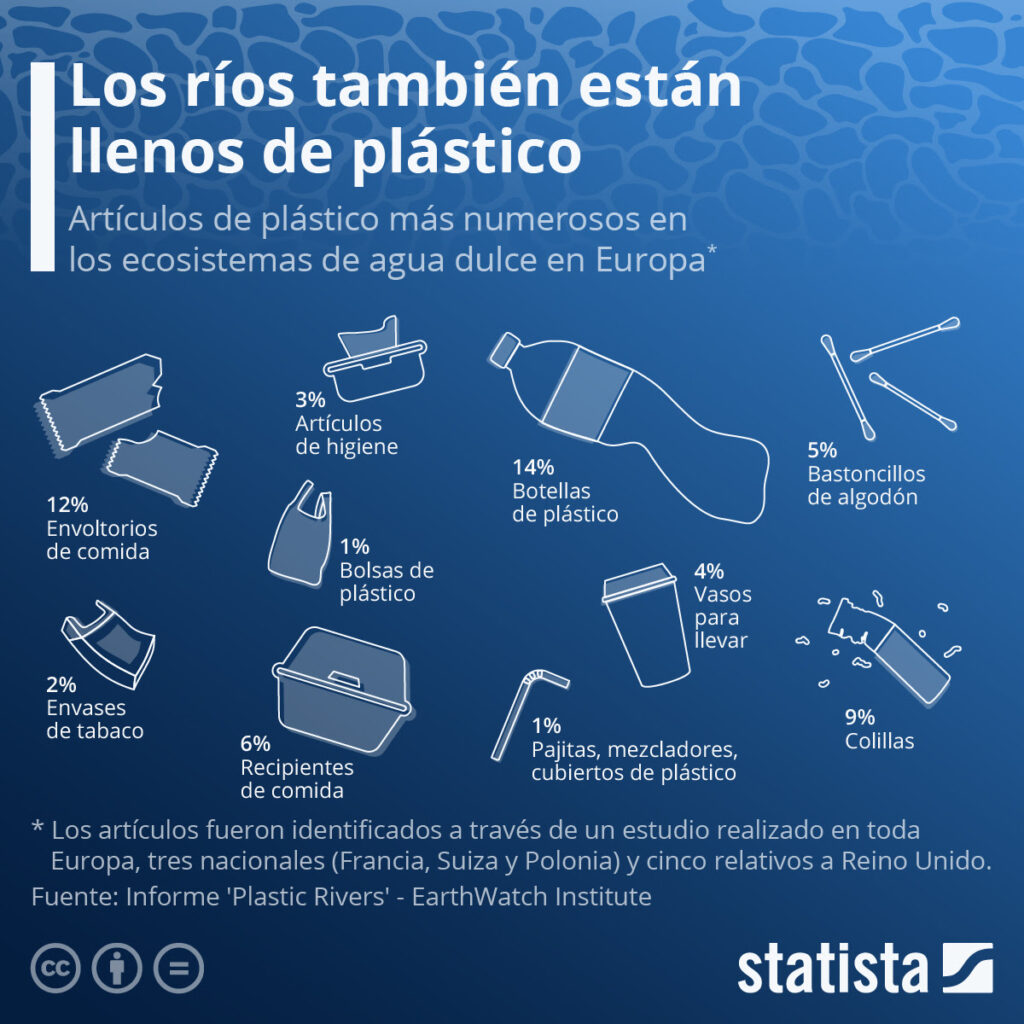According to a study by the environmental charity EarthWatch Institute, most of the plastic that ends up in the oceans comes from rivers. As this graph from Statista shows, according to the results of the study, with data from Europe, bottles constitute up to 14% of the plastic found in these bodies of water in the Old Continent, food wrappers 12%, and butts, 9%. Around 37.5% of the plastic present in fresh water in Europe is associated with the consumption of citizens in their daily lives.
Plastic can take up to 500 years to degrade on the seabed and for this reason several initiatives have been carried out in recent years to curb plastic pollution. This is the case of the International Day Free of Plastic Bags, which is celebrated every July 3, or the Directive on Single-Use Plastics that the EU approved in 2019, which obliges the member states of the European Union to apply a series of measures to eliminate single-use plastics.

Source: inncontext.net

